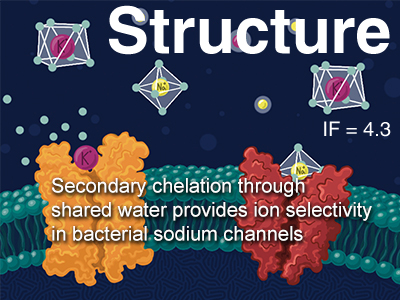
«Secondary Chelation» Mechanism is Proposed to Explain the Selectivity of Bacterial Sodium Channels
Sodium channels play an important role in nature — for example, they determine the excitability of the nervous system and muscles. Their selective conductivity has been intensively studied for many decades, but its physicochemical basis is still unclear. In a new theoretical paper, scientists from the Institute of Bioorganic Chemistry have proposed the so-called “secondary chelation” mechanism, in which the spatial organization of water molecules in the hydration shell of the ion plays a key role. The selectivity filter of a bacterial sodium channel is designed to optimally interact with the hydration shell of Na+, while the shell of K+ is forced to “shrink”, which prevents its passage. The work was published in the journal Structure and was also awarded an illustration on the cover of the issue. Learn more
8 августа 2025 года

